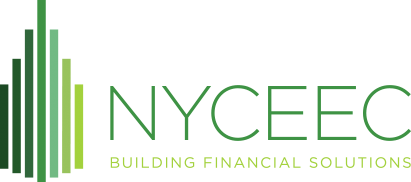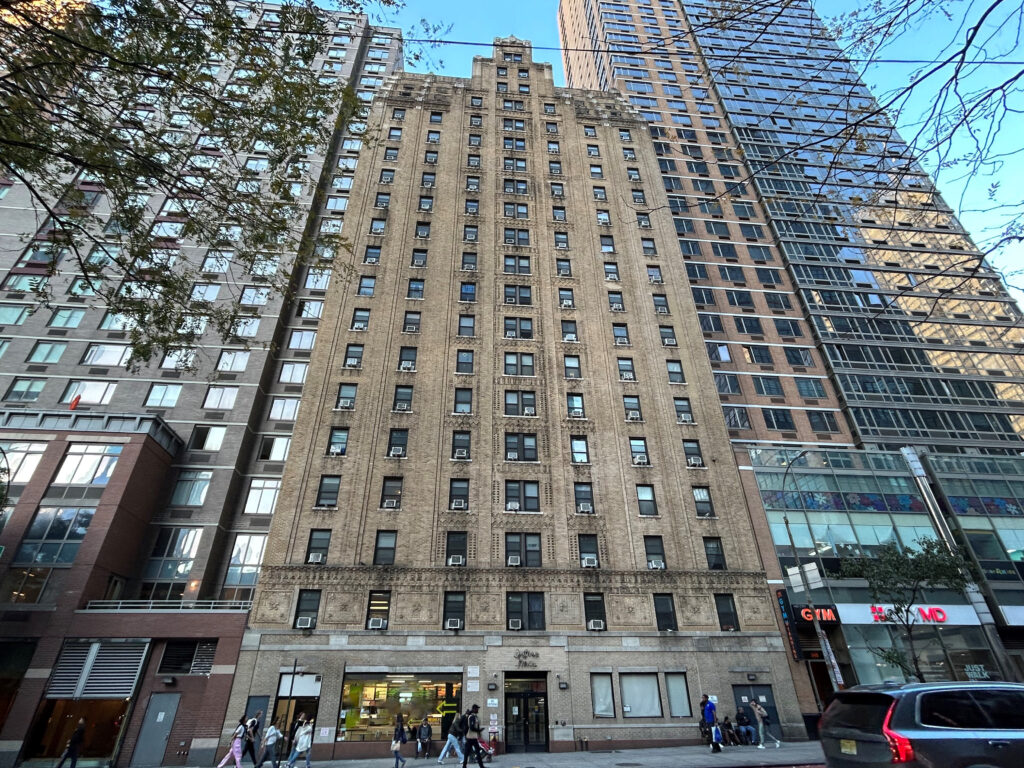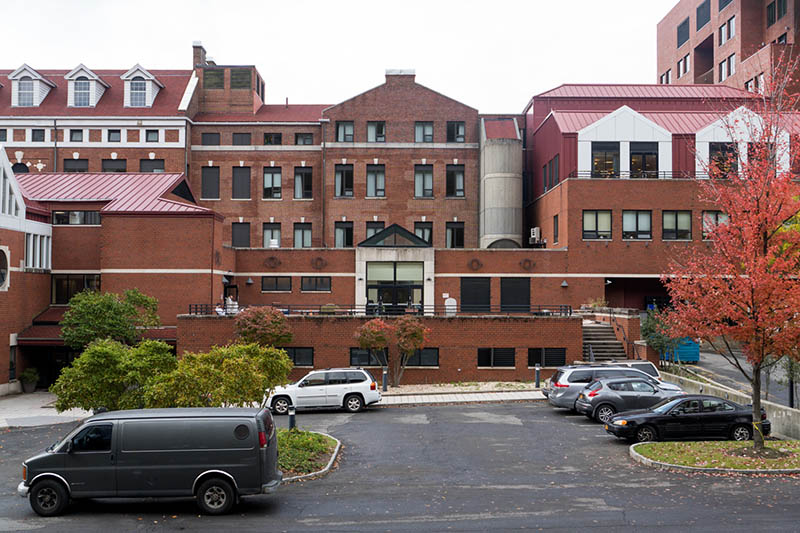Additional Author:
Megan Rosa
I. Introduction
NYCEEC is excited to announce that we have achieved an important milestone in our impact. We have now mobilized over $500 million in capital towards our goal of mobilizing $1 billion in capital to fund clean energy projects. To celebrate this milestone, we are sharing how we measure this impact.
NYCEEC was established in 2010 by New York City to support the city’s building energy efficiency goals as the first local green bank in the U.S. Since then, NYCEEC has expanded and now also makes loans to support distributed solar, energy storage, electric vehicle infrastructure, and high-performance building projects not only in New York, but also in the surrounding region from Washington, D.C. to Boston. Now as an independent non-profit lender, NYCEEC’s mission is to deliver financing solutions and advance markets for energy efficiency and clean energy in communities.
NYCEEC makes loans to building owners, contractors, and developers that serve affordable and market rate multifamily housing, as well as commercial, institutional, and industrial buildings and projects. NYCEEC exists as a non-profit with the goal of filling gaps in the green lending market to facilitate investments in projects that reduce Greenhouse Gas (GHG) with a focus on providing low- to moderate-income (LMI) and disadvantaged communities with access to financing solutions.
To date, NYCEEC has originated over 140 loan facilities with 84% of them for projects located in or supporting LMI communities. Of the approximately $500 million capital mobilized, 46% involve direct lending to projects, 22% to predevelopment loans in support of other projects, 23% to helping to develop and administer third-party lending platforms (i.e., NYC C-PACE), and 8% to supporting other lenders with educational or consulting services.
As a mission-driven lender, we understand the importance of measuring our impact (environmental, financial, and social) to demonstrate the transformative nature of our work. While financing projects that reduce GHG emissions, our activities help crowd-in capital, expand the green lending ecosystem, and improve access to financing for green projects, especially in areas that have historically been overlooked. Our estimate of capital mobilized measures our ability to not only deploy our own capital, but also to mobilize other sources of capital. We are measuring activities that align with our vision.
On the way to our $1 billion capital mobilization goal, NYCEEC has learned many lessons about how to measure our impact in a way that aligns with the activities we are trying to catalyze. There is no one way to measure capital mobilization. This brief summarizes the methodology we deploy and how our measurement technologies are aligned with our vision.
II. Capital Mobilization – What is it and why do we measure it?
In its 2019 strategic plan, NYCEEC established a goal to mobilize $1 billion of capital by the end of 2025. This goal was created to ensure that NYCEEC was undertaking a broad range of activities necessary to advance clean energy deployment in the communities in which we operate. First, we make loans to finance clean energy projects. Second, we make predevelopment loans to finance the upfront (pre-construction) work that goes into “greening” projects such as architectural, design work, and permitting. Without predevelopment capital, many green projects could not be pursued or would ultimately be built to code without incorporating significant green measures that may involve an upfront cost. Third, NYCEEC develops standardized platforms to allow other parties to efficiently finance projects at scale. For example, NYCEEC has supported the development of—and administers—the C-PACE (Commercial Property Assessed Clean Energy) lending program in New York City. Finally, we help support new green lenders (and help existing lenders expand green lending activities) through our educational and consulting efforts. NYCEEC uses different methodologies to measure our impact in each of these areas.
Project Lending
For our project lending, when measuring capital mobilized, NYCEEC captures the total costs of clean energy projects (e.g., community solar) or, for building construction and rehabilitation projects that include green measures, the portion of total project cost attributed to energy efficiency or clean energy measures. In this latter case, NYCEEC does not capture total project costs because every building needs basic features like doors and plumbing, and as a green lender, we should only measure capital mobilized to fund clean energy measures (e.g., heat pumps, solar panels). For example, if we are funding a new green building with a total cost of $20 million and $1 million is attributable to green measures, we record only $1 million of capital mobilization. Sometimes we need to estimate the portion of total project costs that should be counted as green measures where reliable data is not available. Here, we may use third-party estimates of the incremental percentage costs of greening similar high-performance buildings (e.g., using New York State Energy Research and Development (NYSERDA)’s Building of Excellence dataset).
Because we measure total project costs (or the green proportion) rather than the NYCEEC loan amount, we are incentivized to involve other lenders to help finance projects rather than financing them entirely ourselves. For example, if we find two $4 million projects each seeking $2 million of debt, our capital mobilized metric suggests it is preferable to finance $1 million of debt at each project and find other lenders for the remaining $1 million of debt than to finance $2 million of debt at one project (ignoring the other project), as our methodology would count $8 million (not $4 million) of capital mobilization. We believe that one of our key goals should be crowding-in other capital, and our metrics should encourage that activity.
Predevelopment Lending
In the case of predevelopment lending, we include the total costs of the clean energy project our predevelopment loan is supporting (or, as noted in the prior paragraph, the proportion of project costs associated with green measures that are supported by our predevelopment loan). For example, if we make a $100,000 predevelopment loan to support $1,000,000 in building energy-efficiency measures, we would count $1,000,000 of capital mobilized. If we make a $2,000,000 predevelopment loan to support the construction of extremely energy-efficient housing where the total project cost was $50,000,000, we would estimate the proportion of total project cost allocable to green measures (e.g., $3,000,000) and count that amount as capital mobilized. NYCEEC typically records capital mobilized based on the total project costs available at loan closing, whether or not the loan is completely drawn. When a borrower has subsequently received construction financing to complete the project, NYCEEC attempts to collect final project details to revise our capital mobilized number. Our measurement methodology reflects our observation that predevelopment capital is often unavailable or extremely expensive. To encourage predevelopment lending—and thereby, encourage project participants to spend the incremental upfront amounts to green their projects—we measure the capital associated with the project that the predevelopment loan is supporting, not the capital associated with the predevelopment loan itself. We believe that the project is unlikely to occur (or is likely to have fewer, if any, or less effective green measures) without our predevelopment capital.
Third Party Lending Platforms
When measuring the capital mobilization associated with developing new lending platforms principally for third party lenders, more judgement is required. To count all third-party capital ever deployed through a platform could overstate NYCEEC’s impact and encourage us to operate only existing programs rather than develop needed new ones. On the other hand, to exclude all third-party capital deployed through platforms could understate our impact (and encourage us not to establish these programs). In the case of NYC’s C-PACE program, NYCEEC has played an important role in developing the program over several years and administers the program which can effectively finance a wide range of green building projects. The C-PACE program is offered by the New York City’s Mayor’s Office of Climate and Environmental Justice, in partnership with NYCEEC. C-PACE is an innovative financing tool that helps building owners fund up to 100% of the cost of energy efficiency and renewable energy projects with long-term, fixed-rate financing. We have adopted two guidelines in measuring the capital we have mobilized through the NYC C-PACE program. First, NYCEEC believes that as the program administrator, we should only record the amount attributable to a C-PACE loan (not total project costs funded by that loan); NYCEEC’s role as program administrator is more directly tied to the C-PACE loan, not enabling the overall project. Second, for purposes of measuring capital mobilized, NYCEEC will only count C-PACE loan originations by third parties until the program is fully established; at that point, we will not count any additional capital deployed as we should refocus incremental effort on new programs (and our measurement methodology should spur that refocusing).
Educational or Consulting Services
The last way NYCEEC aims to capture its capital mobilization impact is when providing educational or consulting services to support new green lenders or existing lenders that now seek to finance green projects (or to significantly expand those efforts). As with establishing financing platforms, we believe it is unwise to ignore this activity (since we want to encourage the expansion of green lending more broadly) or to take too much credit for these activities (because the institutions we support are left with the hard work of sourcing, underwriting, closing, and servicing transactions). Although this work can be considered an indirect impact, NYCEEC believes it is important to capture as part of growing and scaling the green lending ecosystem. NYCEEC often partners with other lenders, introducing them to key contractors or developers, and where needed, educating them on energy efficiency and clean energy lending. Where this leads them to play a greater role in financing projects independently from NYCEEC, we may count a portion of the capital deployed by that lender in the near-term after providing our services towards our capital mobilization metric.
To date, NYCEEC has completed consulting engagements supporting green lending activities for 27 different institutions across the United States. These vary from conducting a handful of one-on-one learning modules with staff at one organization, to group sessions with a cohort of emerging green lenders, to comprehensive consulting over several months for a single lending institution. While inherently subjective, a small part of our total capital mobilization figure represents these activities which we believe are critically important to realizing our vision of energy efficiency and clean energy financing for communities achieving scale and being accessible to all.
Conclusion
We strive to improve our mobilization of capital in support of the clean energy transition by measuring all the ways we support capital deployment. By counting project costs (and not just our loan amount) for our loans, we are encouraged to identify other capital providers, diversify our credit risks, share underwriting practices, and establish a more liquid market for these loans. By counting project costs financed through our predevelopment lending (and not just our predevelopment loan amounts), we are encouraged to provide predevelopment loans, which are often smaller, shorter in duration, and riskier than loans to completed projects, and thereby, to help fill this market gap. By counting third-party capital deployed while ramping up new green financing platforms, we are encouraged to involve other lenders in green finance and to scale these activities. By counting a small portion of the capital deployed by lenders that we support through educational or consulting activities, we are encouraged to help grow the green lending ecosystem.
III. Limitations to Measuring Impact
NYCEEC aims to measure both its direct and indirect impact to catalyze increased scale and accessibility of energy efficiency and clean energy financing for communities. However, there is currently no standardized approach for measuring impact across comparable lenders and projects. Some limitations to measure impact are based on the availability of the data. For example, for predevelopment loans there is often a time lapse between NYCEEC loan closing to construction finance closing and it can take time to collect accurate data points. An additional limitation includes scope of work fluctuations where total project costs change or a project is delayed or cancelled (which would cause upward or downward revisions in our capital mobilization figure). Another limitation occurs when there are multiple lenders involved in a transaction, which creates the possibility that lenders are double counting the same project metrics. As more green lenders enter the market, there will need to be more transparency and communication on the methodologies used to measure impact.
Although NYCEEC endeavors to maximize our impact and increase capital deployment (as measured by our capital mobilization figure), we also want to see project costs for energy efficiency and renewable energy decrease in order to be more accessible for various communities, and to demonstrate scalability. As project costs decrease, NYCEEC would expect less demand for green loan capital and thus a smaller impact as measured by our capital mobilization. Over time, increasing our capital mobilization metric will likely have the impact of decreasing our focus on certain technologies as they become more commonly deployed (and less expensive), and increasing our focus on newer technologies that have yet to become widely adopted (and are more expensive). We believe that this approach supports NYCEEC’s role of filling financing gaps and supporting newer technologies and market entrants.
It should be noted that while the focus of this discussion is on capital mobilization, NYCEEC measures its impact in other ways. Currently, we also track expected environmental impacts (e.g., reductions in GHG emissions, energy use, and particulate matter), social impacts (e.g., proportion of projects in or supporting LMI communities, affordable housing units greened, and buildings upgraded), and other economic impacts (e.g., lending partnerships and estimated job creation). In addition, NYCEEC tries to track financed projects’ real-world performance to see if they actually achieve results that are in line with projected savings. Tracking these metrics means that NYCEEC can look to best practices and lessons from past projects to inform future lending as well as provide market signals to support green investments. More information about measuring this type of impact is included in our recent Impact Insights Blog.
IV. Looking Ahead
Publication of this brief reflects our belief that it is vitally important to be transparent in our approach to measurement in order to engage the green lending community on standardization. NYCEEC looks forward to collaborating with other green lenders to develop industry standards for measuring impact and to better understand our impact on our climate, economy, and society.







